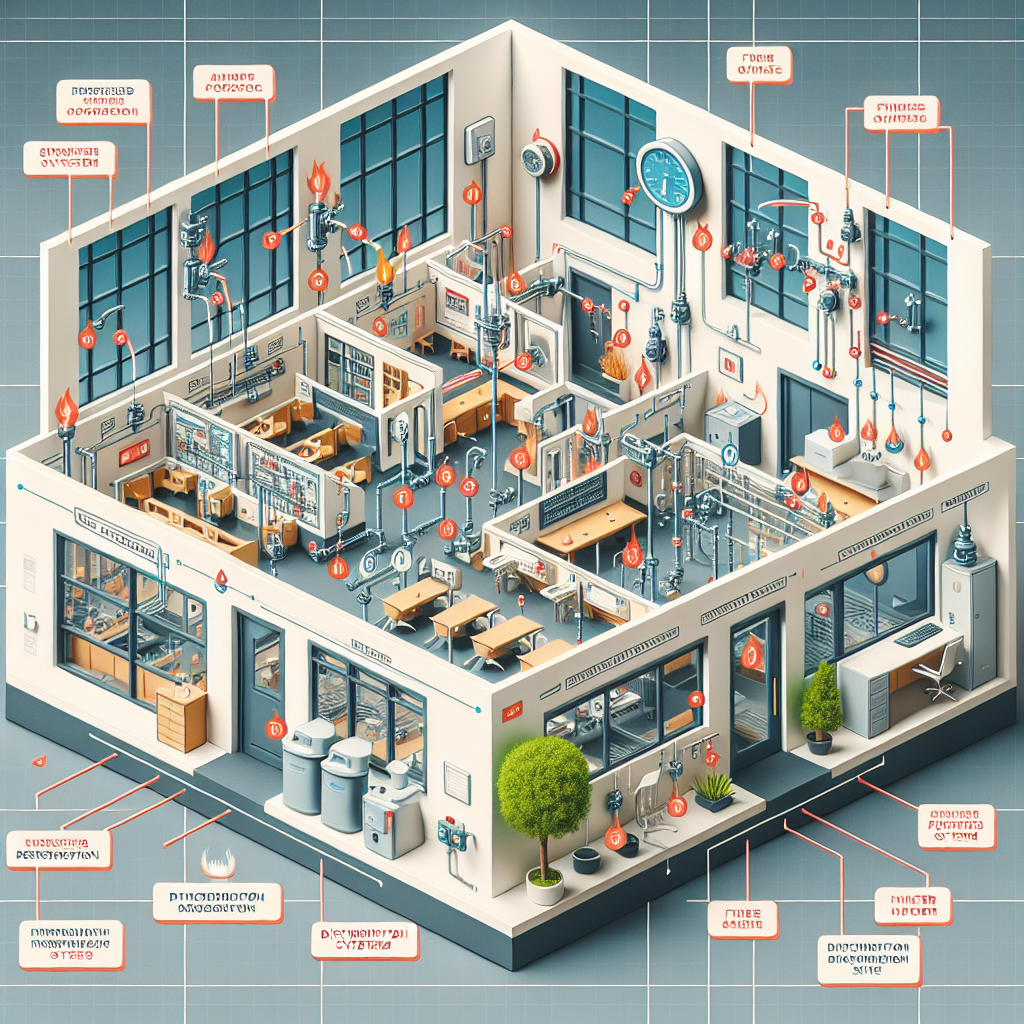Fire safety is a crucial aspect of building management and home maintenance. Among various fire protection systems, fire sprinkler systems stand out for their life-saving capabilities. But how do these systems work? In this article, we’ll demystify fire sprinkler systems, explaining their components, types, and functioning in a way that is both informative and engaging.
Understanding Fire Sprinkler Systems
What Are Fire Sprinkler Systems?
Fire sprinkler systems are automated fire protection devices designed to detect and suppress fires within buildings. These systems aim to minimize property damage, protect lives, and provide valuable extra time for evacuation and emergency responses.
The Components of a Fire Sprinkler System
To fully appreciate how fire sprinkler systems work, it’s essential to understand their core components:
-
Sprinklers: These are the visible parts of the system, often mounted on ceilings. They release water when activated by heat.
-
Piping: This network carries water under pressure from the water supply to the sprinkler heads.
-
Water Supply: Fire sprinkler systems are connected to a dedicated water supply, either through a municipal water line or an on-site water storage tank.
-
Control Valves: These valves control the flow of water in the system, allowing for maintenance and ensuring the system is ready for action.
- Alarm Systems: Many fire sprinkler systems are integrated with fire alarms, which signal occupants and emergency services when a fire is detected.
Types of Fire Sprinkler Systems
Fire sprinkler systems come in several varieties, each designed for specific applications:
-
Wet Pipe Systems: The most common type, where the pipes are always filled with water, ready to discharge when a sprinkler head is activated.
-
Dry Pipe Systems: These systems contain pressurized air instead of water in the pipes. When a sprinkler is activated, the air pressure drops, allowing the water to flow. These are ideal for colder environments, where pipes might freeze.
-
Pre-Action Systems: A hybrid of wet and dry systems, these require two events to trigger; first, a fire detection system activates, and then a sprinkler head is triggered to release water.
- Deluge Systems: These systems have open sprinkler heads and are activated by smoke or heat detectors, releasing water simultaneously in a large area to combat rapidly growing fires.
How Fire Sprinkler Systems Work: The Mechanics
Detection and Activation
When a fire ignites, it produces heat. In a typical fire sprinkler system, each sprinkler head contains a heat-sensitive element (either a glass bulb or a fusible link). At a predetermined temperature (generally around 155°F to 165°F), this element fails, causing the sprinkler head to open and water to be released.
Water Dispersion
Once activated, the water flows through the piping network to the sprinkler head. The system’s design ensures that the water is evenly dispersed over the fire area, creating a cooling effect that suppresses the flames. It’s worth noting that only the sprinklers exposed to the fire will activate, ensuring that water is used efficiently and effectively.
Continuous Protection
Fire sprinkler systems provide continuous protection for the duration of a fire. As long as the fire persists and the heat remains high, the system remains active, dousing flames and preventing them from spreading. Once the fire is under control, the system can be shut off, and repairs or water drainage can occur.
Importance of Fire Sprinkler Systems
Life-Saving Benefits
Most importantly, fire sprinkler systems save lives. According to the National Fire Protection Association (NFPA), buildings equipped with fire sprinklers experience fewer fire-related deaths than those without.
Minimizing Property Damage
These systems not only protect lives but also minimize property damage. A well-functioning sprinkler system can effectively suppress fires before they escalate, resulting in reduced repair costs and less downtime for businesses.
Insurance Incentives
Having a fire sprinkler system can also lead to lower insurance premiums. Many insurers recognize the reduced risk associated with sprinkler-protected properties and may offer discounts, making it a sound investment for homeowners and businesses alike.
Conclusion
Fire sprinkler systems are an integral component of fire safety, effectively detecting and suppressing fires while safeguarding lives and properties. By understanding how these systems work and their importance, individuals and businesses can take proactive steps toward enhanced fire protection. Whether you’re a building manager, homeowner, or just someone interested in fire safety, acknowledging the value of fire sprinkler systems is vital for creating safer environments.
If you haven’t already, consider investing in a fire sprinkler system today. Remember, when it comes to fire protection, prevention is always better than cure!


